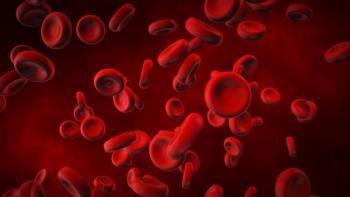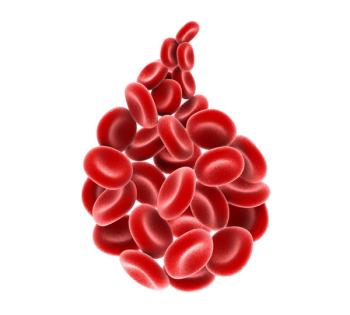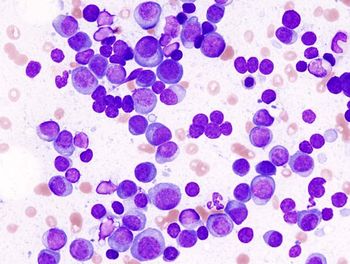
EC Approves Brentuximab Vedotin Combo in Late-Stage Hodgkin Lymphoma
In patients with advanced Hodgkin lymphoma, BrECADD was noninferior to eBEACOPP chemotherapy and demonstrated improved progression-free survival.
The European Commission (EC) has approved brentuximab vedotin (Adcetris) in combination with ECADD (etoposide, cyclophosphamide, doxorubicin, dacarbazine, and dexamethasone) as a treatment for adult patients with newly diagnosed stage IIb with risk factors, stage III, and stage IV Hodgkin lymphoma, according to a news release from the developer, Takeda.1
Previously, in April 2025, the European Medicines Agency’s Committee for Medicinal Products for Human Use
Results from the phase 3 HD21 trial (NCT02661503) that evaluated the efficacy of brentuximab vedotin with ECADD chemotherapy (BrECADD) compared with eBEACOPP chemotherapy (escalated doses of bleomycin, etoposide, doxorubicin, cyclophosphamide, vincristine, procarbazine, and prednisone) supported the EC’s decision. The results were published in The Lancet.3
Patients who received BrECADD had a 4-year progression-free survival (PFS) rate of 94.3% (95% CI, 92.6%-96.1%) vs 90.9% (95% CI, 88.7%-93.1%) with eBEACOPP (HR, 0.66; 95% CI, 0.45-0.97; P = .035). It was also noted that HRs favoring BrECADD were observed across all large subgroups. The overall survival rate at 4 years was 98.6% (95% CI, 97.7%-99.5%) in the BrECADD group and 98.2% (95% CI, 97.2%-99.3%) in the eBEACOPP group.
“With BrECADD, patients now have a treatment option that not only offers greater curative potential but also significantly reduces treatment-related morbidity compared [with] eBEACOPP,” Peter Borchmann, MD, PhD, of the University Hospital of Cologne, Germany, and trial chairman of the HD21 study, stated in the news release.1 “This new [brentuximab vedotin]–based combination therapy may offer a new standard of care for frontline treatment of adults with advanced-stage Hodgkin lymphoma, contributing to improved long-term outcomes for patients.”
A total of 1500 patients were enrolled in the trial, of whom 751 were randomly assigned to the BrECADD group and 749 patients to the eBEACOPP group. Brentuximab vedotin was administered intravenously at 1.8 mg/kg up to a maximum of 180 mg as an absolute dose.
Eligible patients were 60 years or younger with advanced-stage, classical Hodgkin lymphoma with an ECOG performance status from 0 to 2, HIV negativity, and freedom from concurrent disease that would preclude treatment.
The median age of patients was 31 years in the BrECADD group and 31 years in the eBEACOPP group; 56% and 56% of patients, respectively, were men; 92% and 91% were White; 22% and 21% had Ann Arbor stage IIIb disease; 69% and 70% had an ECOG performance status of 0; and 53% and 53% had an international prognostic score of 2 or 3.
The trial’s coprimary end points were tolerability, defined by investigator-assessed treatment-related morbidity, and PFS, which included central review of all tumor events. Secondary end points included adverse events of any grade, frequency of complete response, and overall survival.
Regarding safety, at least 1 treatment-related morbidity event occurred in 42% of the BrECADD group and 59% of the eBEACOPP group (relative risk, 0.72; 95% CI, 0.65-0.80; P <.0001); among relevant subgroups, the relative risk estimates were consistent.
Hematologic treatment-related morbidity events occurred in 31% of the BrECADD group and 52% of the eBEACOPP group (P <.0001). Grade 3 or higher infections occurred in 20% vs 19%, respectively; neutropenic fever occurred in 28% vs 21%.
One year after treatment, the toxicities of 96% of patients in the BrECADD group were fully resolved or were grade 1 vs 93% in the eBEACOPP group; hematological treatment-related morbidity events resolved for all but 1 patient in the eBEACOPP group. Dose reductions were more frequent with eBEACOPP than BrECADD; most occurred in the BrECADD group due to thrombocytopenia (23%), and most occurred in the eBEACOPP group due to leukopenia (34%).
“Because treatment burden for patients with advanced-stage Hodgkin lymphoma is high and can substantially affect a patient’s long-term quality of life, minimizing toxicities without compromising efficacy is the major goal of current clinical research. By including treatment-related morbidity as a coprimary end point to measure clinically relevant toxicities, we are better positioned to address and manage these effects, ultimately enhancing patient well-being and outcomes,” Borchmann stated in an e-mail correspondence with CancerNetwork®.
References
- European Commission approves Adcetris (brentuximab vedotin) for the treatment of adult patients with newly diagnosed stage IIb/III/IV Hodgkin lymphoma in combination with ECADD. News release. Takeda. June 3, 2025. Accessed June 3, 2025. https://tinyurl.com/ynphzezj
- Takeda receives positive CHMP opinion for Adcetris (brentuximab vedotin) for the treatment of adult patients with newly diagnosed stage IIb/III/IV Hodgkin lymphoma in combination with ECADD. News release. Takeda. April 25, 2025. Accessed June 3, 2025. https://tinyurl.com/4bvuy4wn
- Borchmann P, Ferdinandus J, Schneider G, et al; German Hodgkin Study Group; Swiss Group for Clinical Cancer Research; Arbeitsgemeinschaft Medikamentöse Tumortherapie; Nordic Lymphoma Group; Australasian Leukaemia and Lymphoma Group. Assessing the efficacy and tolerability of PET-guided BrECADD versus eBEACOPP in advanced-stage, classical Hodgkin lymphoma (HD21): a randomised, multicentre, parallel, open-label, phase 3 trial. Lancet. 2024;404(10450):341-352. doi:10.1016/S0140-6736(24)01315-1
- Bröckelmann PJ, Goergen H, Kohnhorst C, et al. Late relapse of classical Hodgkin lymphoma: an analysis of the German Hodgkin study group HD7 to HD12 trials. J Clin Oncol. 2017;35(13):1444-1450. doi:10.1200/JCO.2016.71.3289.
Newsletter
Stay up to date on recent advances in the multidisciplinary approach to cancer.

















































































